VMware 3v0-42-20 practice test
Advanced Design VMware NSX-T Data Center Exam
Question 1
An architect is helping an organization with the Logical Design of an NSX-T Data Center solution.
This information was gathered during the Assessment Phase:
Maximum performance and availability is required between the physical and virtual network.
Load Balancing service is required for back-end web servers.
NAT is required.
Which selection should the architect include in their design? (Choose the best answer.)
- A. Deploy a Tier-1 gateway and connect it to an Active/Active Tier-0 gateway with ECMP configured.
- B. Deploy an Active/Active Tier-0 gateway and configure ECMP.
- C. Deploy an Active/Standby Tier-0 gateway and configure ECMP.
- D. Create two separate VLANs to connect the Tier-0 gateway upstream traffic and configure ECMP.
Answer:
C
Question 2
An architect is helping an organization with the Logical Design of an NSX-T Data Center solution.
This information was gathered during the Assessment Phase:
Customer is concerned with NSX Manager availability.
3 cabinets/racks are available in the data center.
No integration with 3rd party solution is required.
There is no budget for physical equipment acquisition.
The 3 cabinets/racks do not share the same L2 domain.
Which three selections should the architect include in their design to address the customers concern
with NSX Manager availability? (Choose three.)
- A. Deploy 2 cold standby NSX Manager appliances in rack 2/3.
- B. Use separate IP per NSX Manager appliance per rack.
- C. Use another NSX Manager IP in case an appliance fails.
- D. Deploy a single active NSX Manager appliance in rack 1.
- E. Deploy an NSX Manager Appliance per rack and cluster them.
- F. Use a physical/internal load-balancer with the cluster.
Answer:
ADE
Question 3
An administrator is asked to improve Recovery Point Objective (RPO) and Recovery Time Objective
(RTO) for Disaster Recovery (DR) in their company network. The network has a primary site and a
secondary site. The ability to support outages with minimum loss of connectivity to the companys
core application is a priority.
Which design should the administrator recommend? (Choose the best answer.)
- A. NSX-T Data Center using an Orchestrator to recover VMs across sites.
- B. NSX-T Data Center using Federation and dependencies set between primary and secondary sites.
- C. NSX-T Data Center using a registered third-party DR solution.
- D. NSX-T Data Center using built-in standard automation DR and secondary site recovery setup.
Answer:
B
Reference:
https://docs.vmware.com/en/VMware-NSX-T-Data-Center/3.0/nsxt_30_admin.pdf
Question 4
Which three assessment findings are part of a Conceptual Design? (Choose three.)
- A. risks
- B. host names
- C. justifications
- D. constraints
- E. assumptions
- F. vendor model
Answer:
ACD
Question 5
Which selection must be taken into consideration when creating a Logical Design for a planned
migration? (Choose the best answer.)
- A. An N-VDS can only attach to a single Overlay transport zone.
- B. An N-VDS can only attach to a single VLAN transport zone.
- C. An N-VDS can attach to both an Overlay and a VLAN transport zone to a N-VDS having different name/s.
- D. An N-VDS must be disabled before attaching both Overlay and VLAN transport zones.
Answer:
B
Question 6
Refer to the exhibit.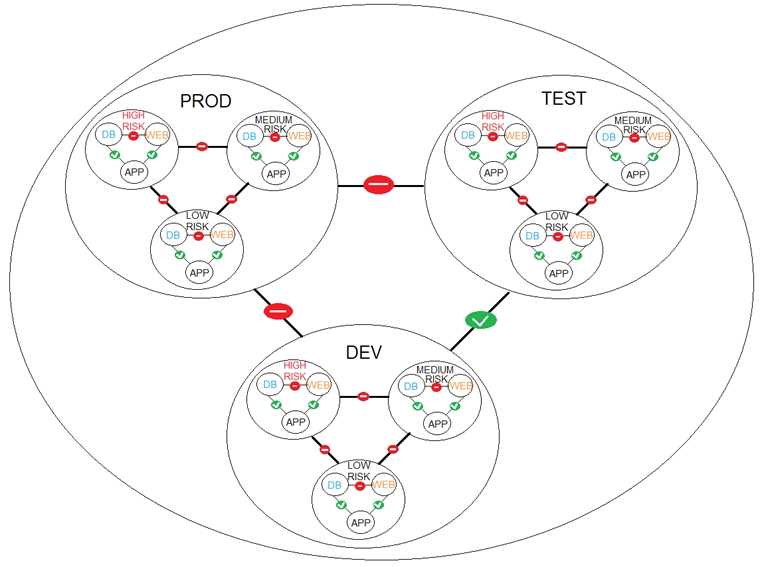
A financial company is adopting micro-services with the intent of simplifying network security. An
NSX-T architect is proposing a NSX-T Data Center micro-segmentation logical design. The architect
has created a diagram to share with the customer.
How many security levels will be implemented according to this Logical Design? (Choose the best
answer.)
- A. 5 levels
- B. 3 levels
- C. 9 levels
- D. 4 levels
Answer:
A
Question 7
A customer deploying NSX-T Data Center requires role based access controls be enforced in NSX
Manager with these requirements:
identity platform must be highly available
authentication must be performed by customers existing SAML identity provider
MFA must be performed by administrator to gain access to NSX Manager
Which identity deployments would meet the customers requirements? (Choose the best answer.)
- A. NSX Manager OAuth 2.0 registered to a 3-node Active Directory Federation Services cluster.
- B. NSX Manager OAuth 2.0 registered to a 2-node VMware Identity Manager cluster.
- C. NSX Manager OAuth 2.0 registered to a 2-node Active Directory Federation Services cluster
- D. NSX Manager OAuth 2.0 registered to a 3-node VMware Identity Manager cluster.
Answer:
D
Question 8
Refer to the exhibits.
Design Option1: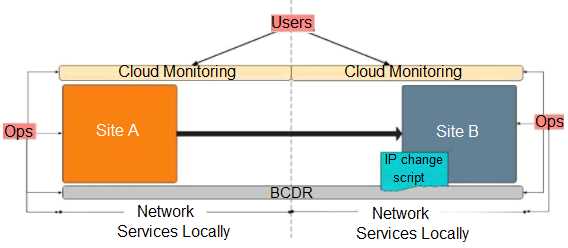
Design Option 2: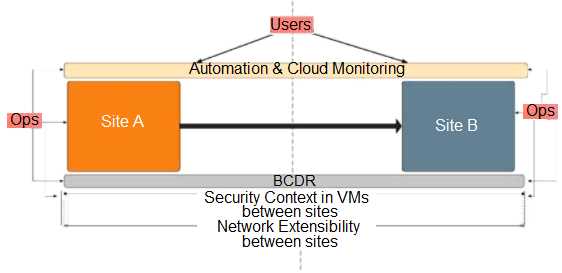
Design Option 3: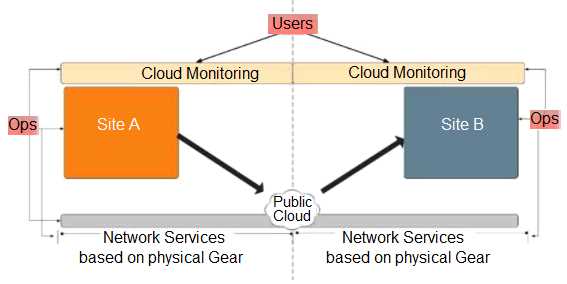
Design Option 4: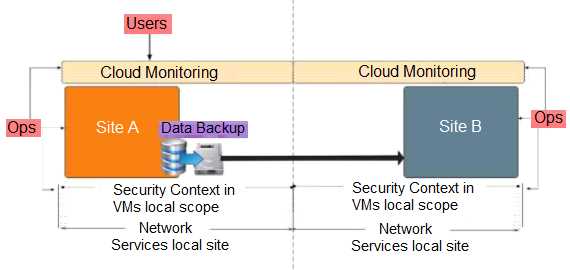
An architect is helping an organization with the Conceptual Design of an NSX-T Data Center solution.
The conceptual design includes these requirements, assumptions, constraints, and risks:
Critical applications must run across sites without changing IP address.
Business continuity and disaster recovery (BCDR) plans will leverage a second site running vSphere.
RTO/RPO must be reduced for recovery of applications on secondary site.
IT Teams require automation tools for configuration.
Which Conceptual Design would the architect recommend to the customer? (Choose the best
answer.)
- A. Design Option 4
- B. Design Option 2
- C. Design Option 1
- D. Design Option 3
Answer:
C
Question 9
Which three choices are non-functional requirements? (Choose three.)
- A. authorization
- B. certification
- C. availability
- D. authentication
- E. scalability
- F. cost
Answer:
ABE
Question 10
A telecom company has purchased NSX-T as part of a Software Defined Data Center (SDDC) initiative.
The company wants to ensure the highest performance for network traffic leaving the virtual
environment.
- A. Configure Equal-Cost Multi-Pathing on the NSX Edges.
- B. Configure SR-IOV for the virtual NSX Edges.
- C. Use bare metal NSX Edges.
- D. Select Network cards that support VXLAN Offload.
- E. Set “Latency Sensitive” option to High when deploying the virtual NSX Edges.
Answer:
BE
Question 11
An architect is helping an organization with the Logical Design of an NSX-T Data Center solution.
This information was gathered during the Assessment Phase:
There isnt much budget available for a new off shore site.
The new site is decentralized and no communication with the main data center is required.
The design will need to cater for availability, upgrades, and failure scenarios.
N+1 must be maintained at all times.
Which three selections should the architect recommend in their design? (Choose three.)
- A. Separate the hosts physical NICs for VSS and N-VDS.
- B. Make all pNICs part of N-VDS and VMKs will be migrated.
- C. Collapse the Management/Edge/Compute cluster.
- D. Install a minimum 4 ESXi hosts in the site.
- E. A Shared Edge/Management cluster and one for Compute.
- F. Install a minimum of 3 ESXi hosts in the site.
Answer:
ABC
Question 12
A Solutions Architect is designing an environment with 1,200 services being offered through the NSX-
T Data Center Load Balancer.
Which three selections are necessary to meet the minimum requirements to support the solution?
(Choose three.)
- A. Extra Large Load Balancer
- B. Tier 1 Gateway
- C. Tier 0 Gateway
- D. Large Edge Node
- E. Extra Large Edge Node
- F. Large Load Balancer
Answer:
BDF
Question 13
An architect is helping an organization with the Conceptual Design of an NSX-T Data Center solution.
Which three selections are requirements documented by an architect? (Choose three.)
- A. Aggregate N-S throughput at any given time should be at least 10G.
- B. All traffic should recover in the event of Host/Rack/ToR failure.
- C. Hardware is 5 years old and new hardware is already purchased.
- D. SAN storage has enough capacity to build the new infrastructure.
- E. Business critical applications should have an SLA of 99.99%.
- F. The Development Team are heavy on API usage.
Answer:
ACF
Question 14
What is a design justification for a solution with 3 NSX Manager nodes deployed in a 4 ESXi cluster
Management Cluster? (Choose the best answer.)
- A. NSX Controllers are separated from NSX Managers allowing 6 ESXi servers to host them.
- B. NSX Management Plane and Control Plane will be reduced to a single point of failure.
- C. Compute consumption guarantees NSX Manager nodes can be run on the same ESXi host.
- D. Single point of failure on Control Plane and Management Plane will be mitigated.
Answer:
B
Question 15
An architect is helping an organization with the Logical Design of an NSX-T Data Center solution.
During discussions about centralized services NAT running on Tier-1 or Tier-0 Gateway, the customer
made these requests:
Services contain stateful services.
Services should be in high availability mode.
Which two selections should the architect include in their design? (Choose two.)
- A. An active/active model should be used.
- B. Use Reflexive NAT on the uplink interface.
- C. DNAT should be applied on the uplink interface.
- D. Mix stateful and stateless NAT rules on the same gateway.
- E. The high availability mode supported is only Active-Standby.
Answer:
DE